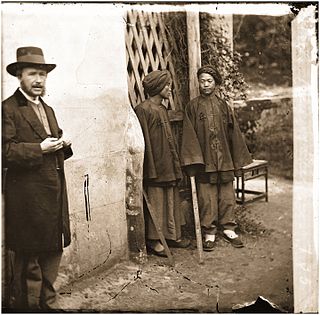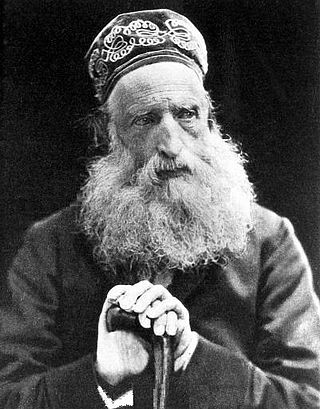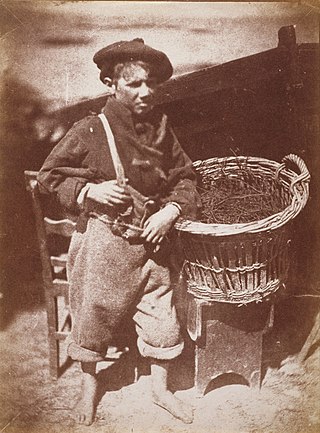
Sir David BrewsterKH PRSE FRS FSA Scot FSSA MICE was a Scottish scientist, inventor, author, and academic administrator. In science he is principally remembered for his experimental work in physical optics, mostly concerned with the study of the polarization of light and including the discovery of Brewster's angle. He studied the birefringence of crystals under compression and discovered photoelasticity, thereby creating the field of optical mineralogy. For this work, William Whewell dubbed him the "father of modern experimental optics" and "the Johannes Kepler of optics."

The Royal Society of Edinburgh (RSE) is Scotland's national academy of science and letters. It is a registered charity that operates on a wholly independent and non-partisan basis and provides public benefit throughout Scotland. It was established in 1783. As of 2021, there are around 1,800 Fellows.

Sir Archibald Geikie was a Scottish geologist and writer.

National Galleries Scotland: Portrait is an art museum on Queen Street, Edinburgh. Portrait holds the national collections of portraits, all of which are of, but not necessarily by, Scots. It also holds the Scottish National Photography Collection.

Daniel Stewart's College was designed by the architect David Rhind and opened as Daniel Stewart's Hospital in 1848, renamed to Daniel Stewart's College in 1870, and placed under the perpetual management of the Royal Company of Merchants of the City of Edinburgh.

This article is a timeline of the history of Edinburgh, Scotland, up to the present day. It traces its rise from an early hill fort and later royal residence to the bustling city and capital of Scotland that it is today.

John Thomson FRGS was a pioneering Scottish photographer, geographer, and traveller. He was one of the first photographers to travel to the Far East, documenting the people, landscapes and artefacts of eastern cultures. Upon returning home, his work among the street people of London cemented his reputation, and is regarded as a classic instance of social documentary which laid the foundations for photojournalism. He went on to become a portrait photographer of High Society in Mayfair, gaining the Royal Warrant in 1881.

The Royal Photographic Society of Great Britain, commonly known as the Royal Photographic Society (RPS), is one of the world's oldest photographic societies. It was founded in London, England, in 1853 as the Photographic Society of London with the objective of promoting the art and science of photography, and in 1853 received royal patronage from Queen Victoria and Prince Albert.

Mungo Ponton FRS FRSE was a Scottish inventor who in 1839 created a method of permanent photography based on potassium dichromate.

The Queen's Hall is a performance venue in the Southside, Edinburgh, Scotland. The building opened in 1824 as Hope Park Chapel and reopened as the Queen's Hall in 1979.
Wendy McMurdo specialises in photography and digital media. In 2018 she was named as one of the Hundred Heroines, an award created by the Royal Photographic Society to showcase global female photographic practice.

The Edinburgh Calotype Club of Scotland was the first photographic club in the world. Its members consisted of pioneering photographers primarily from Edinburgh and St Andrews. The efforts of the Club's members resulted in the production of two of the world's earliest assembled photographic albums, consisting of more than 300 images.

Thomas Rodger was an early Scottish photographer. He studied at the University of St Andrews and was a protégé of Dr. John Adamson who also persuaded him to become a photographer. At age 14, he was apprenticed to Dr. James, a local chemist and druggist, whilst studying at Madras College. Adamson later taught him the calotype process which he had earlier taught his famous brother, Robert Adamson. Adamson persuaded him to assist Lord Kinnaird in his calotype studio at Rossie Priory. Rodger enrolled at the Andersonian College of Glasgow to study medicine, but Adamson persuaded him to set up a professional business in calotyping in St Andrews.

George Street is the central thoroughfare of the First New Town of Edinburgh, planned in the 18th century by James Craig.
Events from the year 1839 in Scotland.

Scotland played a major role in the technical development of photography in the nineteenth century through the efforts of figures including James Clerk Maxwell and David Brewster. Its artistic development was pioneered by Robert Adamson and artist David Octavius Hill, whose work is considered to be some of the first and finest artistic uses of photography. Thomas Roger was one of the first commercial photographers. Thomas Keith was one of the first architectural photographers. George Washington Wilson pioneered instant photography and landscape photography. Clementina Hawarden and Mary Jane Matherson were amongst the first female photographers. War photography was pioneered by James MacCosh, James Robertson, Alexander Graham and Mairi Chisholm.
The Royal Physical Society of Edinburgh was a learned society based in Edinburgh, Scotland "for the cultivation of the physical sciences".
John Ramsay L’Amy of Dunkenny WS FRSE DL (1813-1892) was a Scottish lawyer, phrenologist and early photographer. To distinguish himself from his grandfather, of the same name, he was often styled “Younger Dunkenny”.
James L'Amy of Dunkenny was a Scottish advocate and amateur phrenologist. He served as Sheriff of Forfar from 1819 until death.














